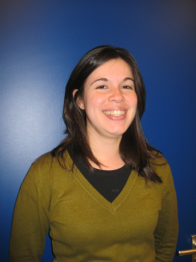Nanofabrication of bio-inspired architectures with light harvesting proteins
Promotion date: 11. December 2009
Promotor: Prof. Dr. Vinod Subramaniam
Assistant Promotor: Dr. Cees Otto
| Nanofabrication techniques were used to control the spatial dimensions and organization of biological assemblies: purified components of the photosynthetic system. Nano-imprint lithography and multivalent host/guest interactions were used as top-down and bottom-up nanofabrication approaches respectively. A first observation of long-range transport was shown, of excitation energy within a bio-mimetic molecular light-guide. The assemblies were characterized with AFM imaging in combination with optical imaging (spectral fluorescence microscopy and lifetime measurements) in liquid conditions. Other biological systems studied, were visible fluorescent proteins and α-synuclein. |
Was there a special moment during your thesis project, that you remembered well?
Seeing the actual energy-transport, was by far the coolest part. This moment occurred after three years, and was a kind of milestone. The array-building process and the characterizing techniques, require a long-term investment on different aspects of nanotechnology. The observation was a reward for that, so to say.
At this special moment, the project was running alright, by the way. Two chapters were finished by then already.
What is the main difference between this four-years period, in comparison with the master project, in your experience?
The responsibility for your own results is much higher! One has to organize his own experiments, in collaboration with different groups. This was possible thanks to a skilled group of supervisors, staff members, technicians and colleagues who were open to work towards a concrete goal.
I also learned to focus as well. It is necessary to finish each step properly, and then use the outcomes to plan your research further.
You collaborated with a number of groups ...
This was a highly multidisciplinary project, and a successful collaboration between three different chairs from Mesa+: Biophysical Engineering, Molecular nanofabrication, Transducers Science and Technology. Also the Department of Molecular Biology and Biotechnology of the University of Sheffield (UK) participated.
Sometimes it is hard to combine knowledge and techniques from different disciplines but very rewarding at the end.
What are your future plans?
It is time for a change. I would like to work for a company now, doing research that is more directed towards applications, following shorter deadlines.
.

